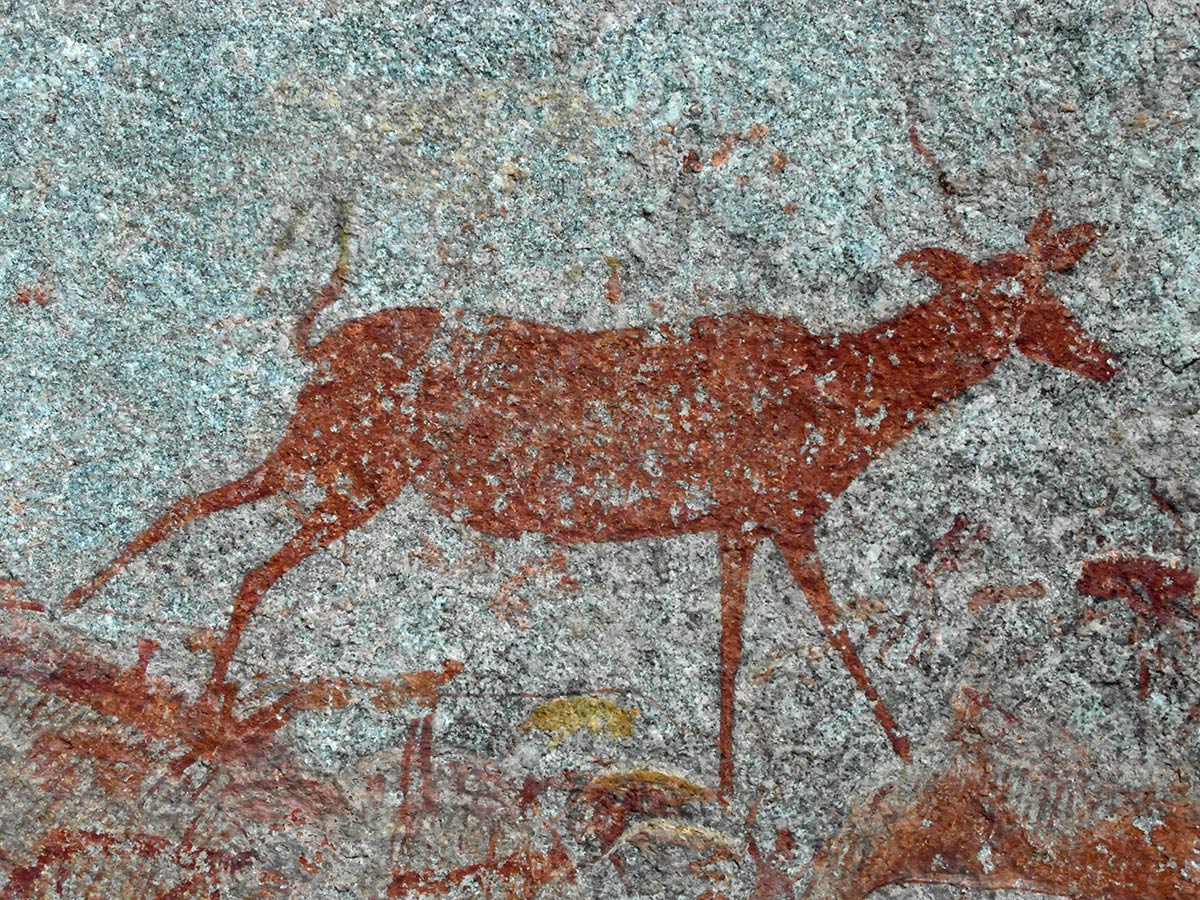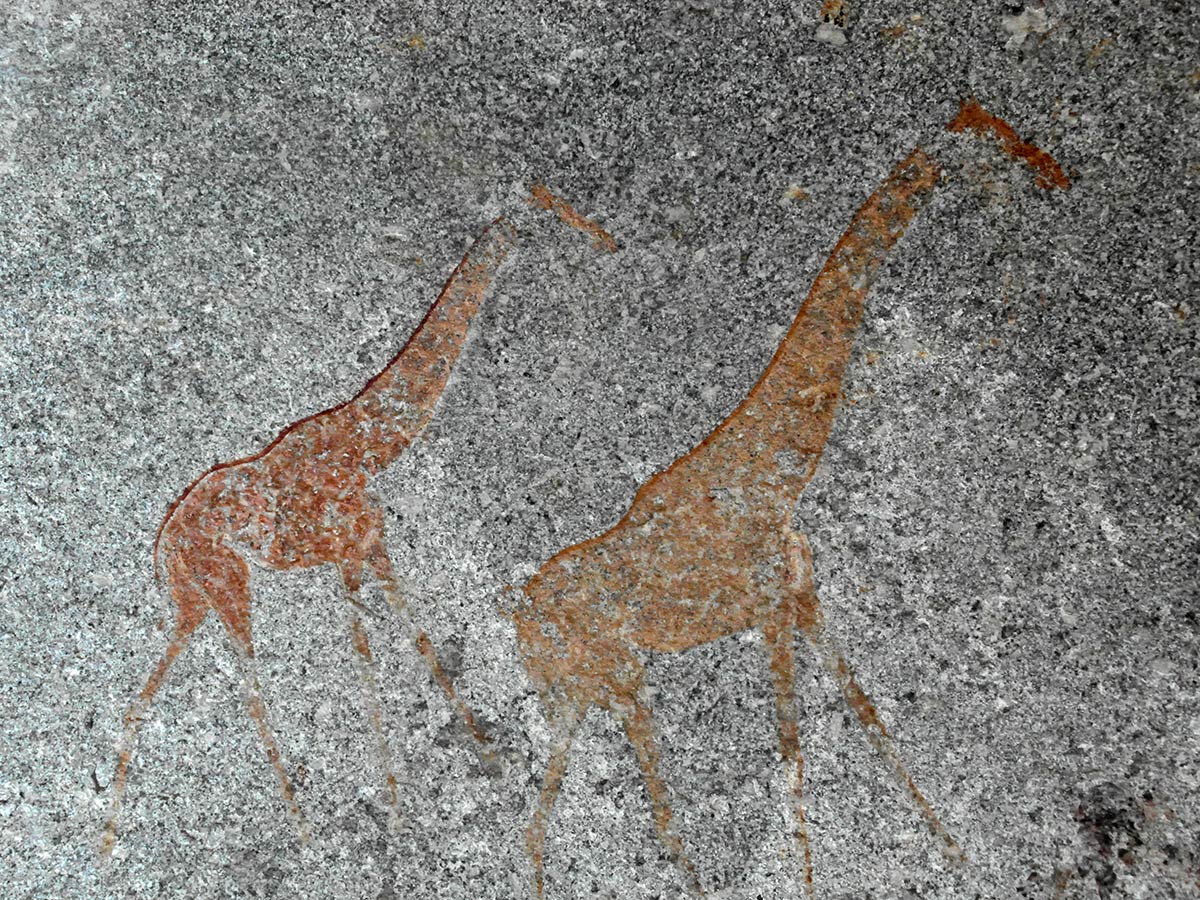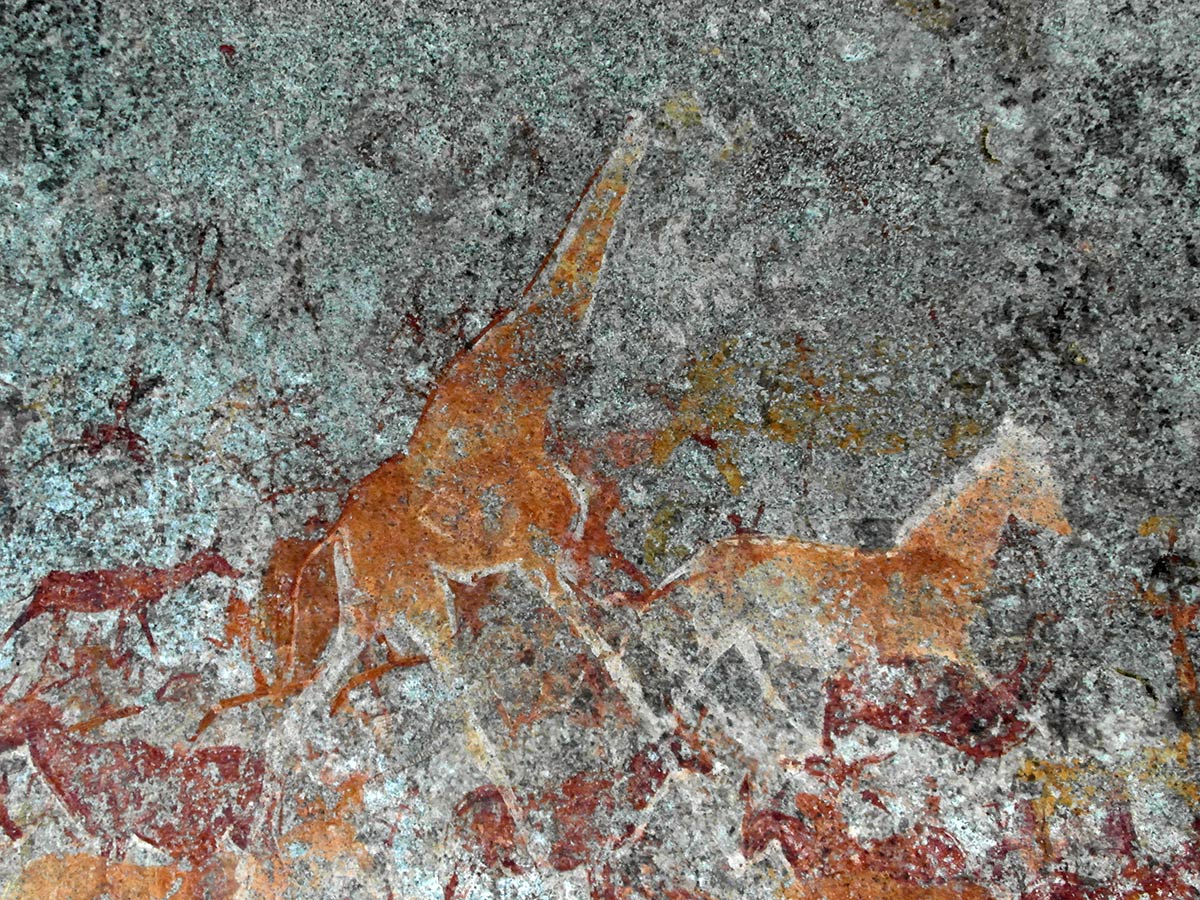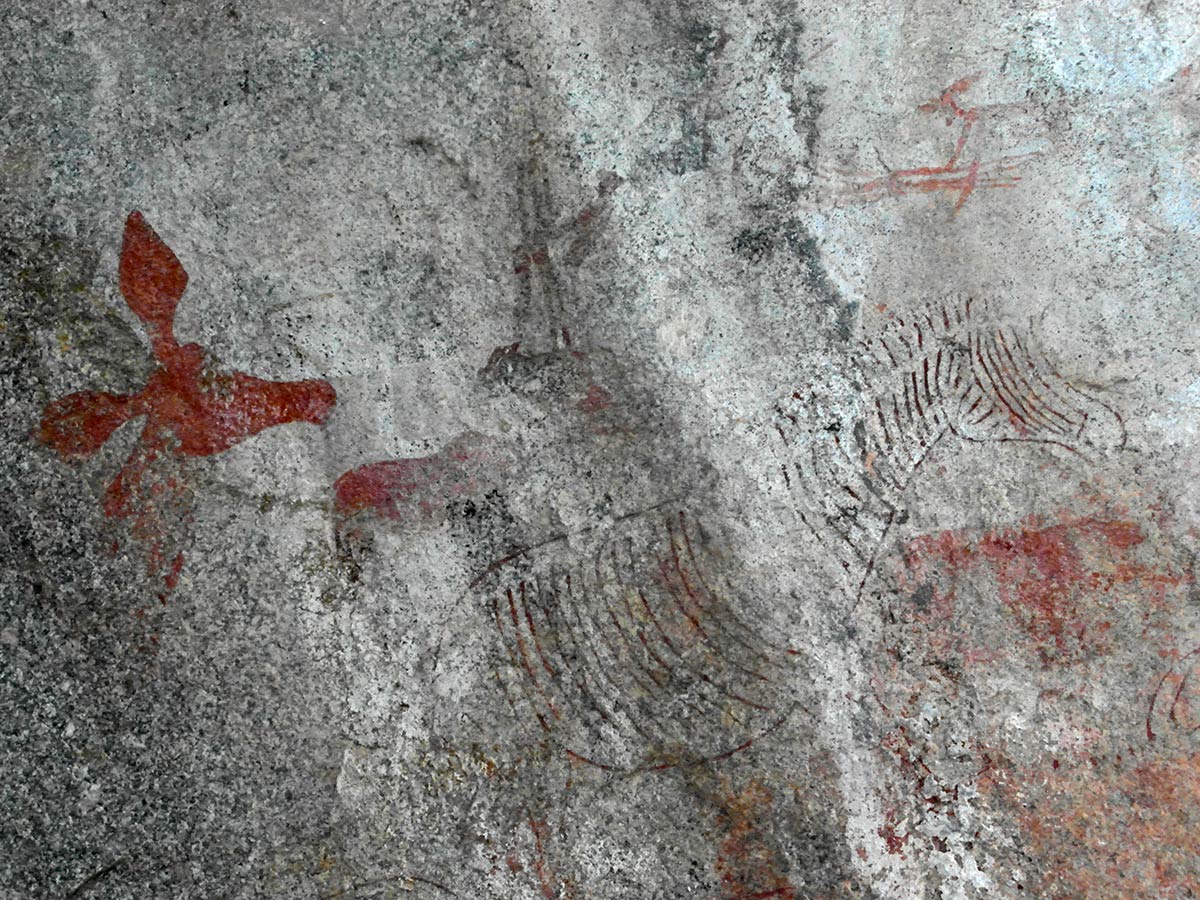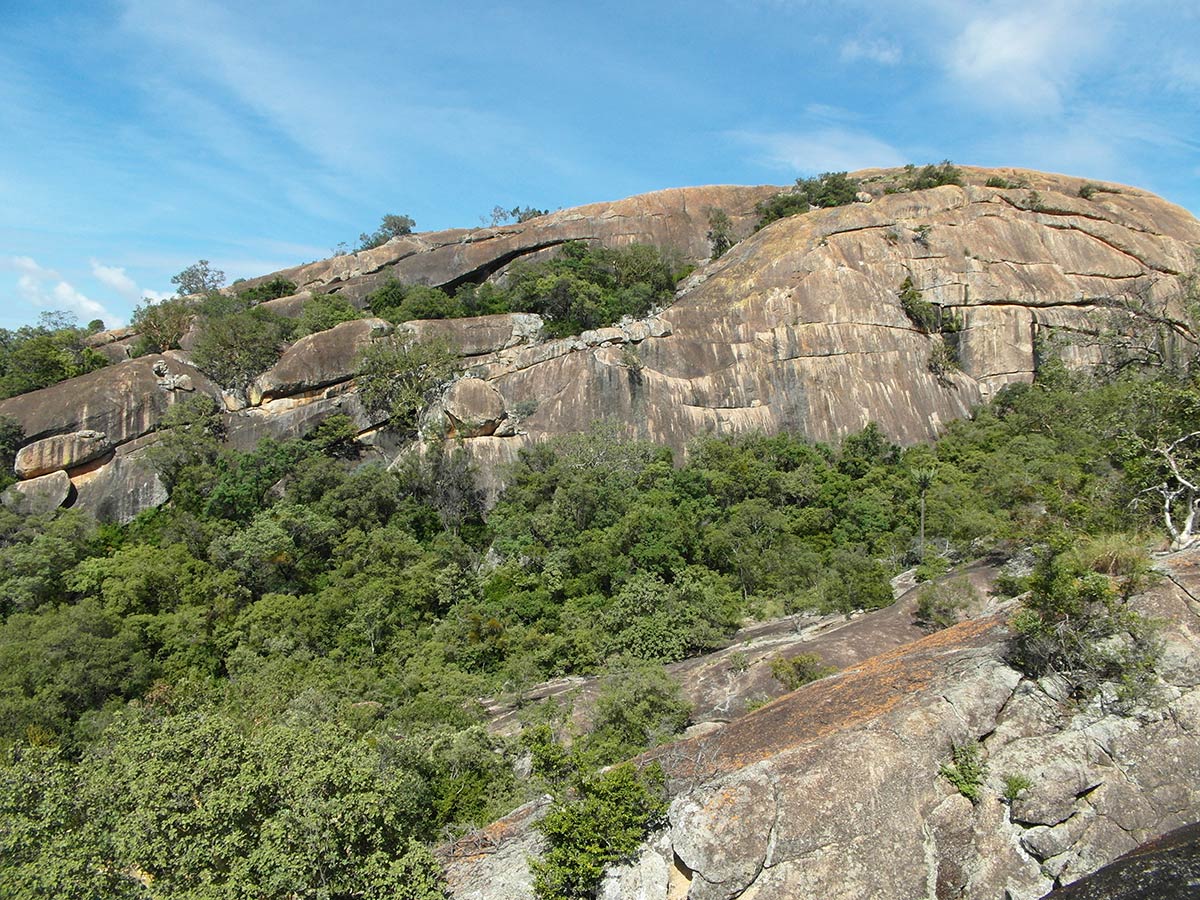Matopo Hills Cave Paintings
The Matopo Hills are a group of granite hills southeast of Bulawayo, Zimbabwe, formed by river erosion and weathered into fantastic shapes and deep valleys. The hills are associated with folklore and tradition; some are revered as dwelling places for the spirits of departed Ndebele chiefs. The hills contain numerous caves (notably Bambata, Nswatugi, and Silozwane) with Khoekhoe paintings and Stone and Iron Age archaeological sites. The name may have originated from matombe or madombe, meaning "the rocks," or from matobo, "bald heads."
Click any image to enlarge.
Author's note: It is inaccurate and misleading to describe and label the rock paintings and etchings in caves strewn across the vast region of southern Africa as 'rock art' for two reasons. One, while the paintings and etchings were often done with varying degrees of artistic ability, their purpose was not artistic but instead shamanic, ceremonial, and therapeutic. Two, while the paintings and etchings did indeed have various shamanic, ceremonial and therapeutic functions, they are better understood to be markers of specific geographic places of power, spirit and energy. That is what is most important; whatever the (supposed) meaning of the paintings and etchings, their geographic locations are primary, while the human artifacts are secondary.

Martin Gray is a cultural anthropologist, writer and photographer specializing in the study of pilgrimage traditions and sacred sites around the world. During a 40 year period he has visited more than 2000 pilgrimage places in 160 countries. The World Pilgrimage Guide at sacredsites.com is the most comprehensive source of information on this subject.






